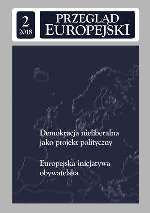Kto i z kim? Analiza rozbieżności stanowisk w głosowaniach w Radzie Unii Europejskiej, w latach 2009–20141
Who and with whom? Analysis of the discrepancy of voting in the Council of the European Union in 2009–2014
Author(s): Adrian GorgoszSubject(s): Politics / Political Sciences, Politics, Law, Constitution, Jurisprudence, Political Sciences, Public Administration
Published by: Wydawnictwa Uniwersytetu Warszawskiego
Keywords: Council of the European Union; coalition building; ordinary legislative procedure; European Union; EU legislation; multidimensional scaling
Summary/Abstract: The purpose of the article is to analyse the cases of contestation of decisions in the Council of the European Union during voting on legislative acts in the ordinary legislative procedure, in the period 2009–2014.In the first step, two research hypotheses were delineated. The first one assumed the dominance of the coalition culture in voting, the second one assumed the opposite, the dominance of the culture of consensus. In addition, two further hypotheses were delineated which assumed conflicts in the European Union between the countries of the north and south and between the “old” vs. “new” Union. In order to verify the hypotheses, a multidimensional scaling technique was applied. Empirical analysis confirmed that the dominant culture of voting is the culture of consensus. Despite this, several countries strongly emphasised their separate positions, trying to form coalitions. Moreover, conflicts between the north and south Europe and the “new” and “old” Union were not confirmed.
Journal: Przegląd Europejski
- Issue Year: 2018
- Issue No: 2
- Page Range: 175-198
- Page Count: 24
- Language: Polish

